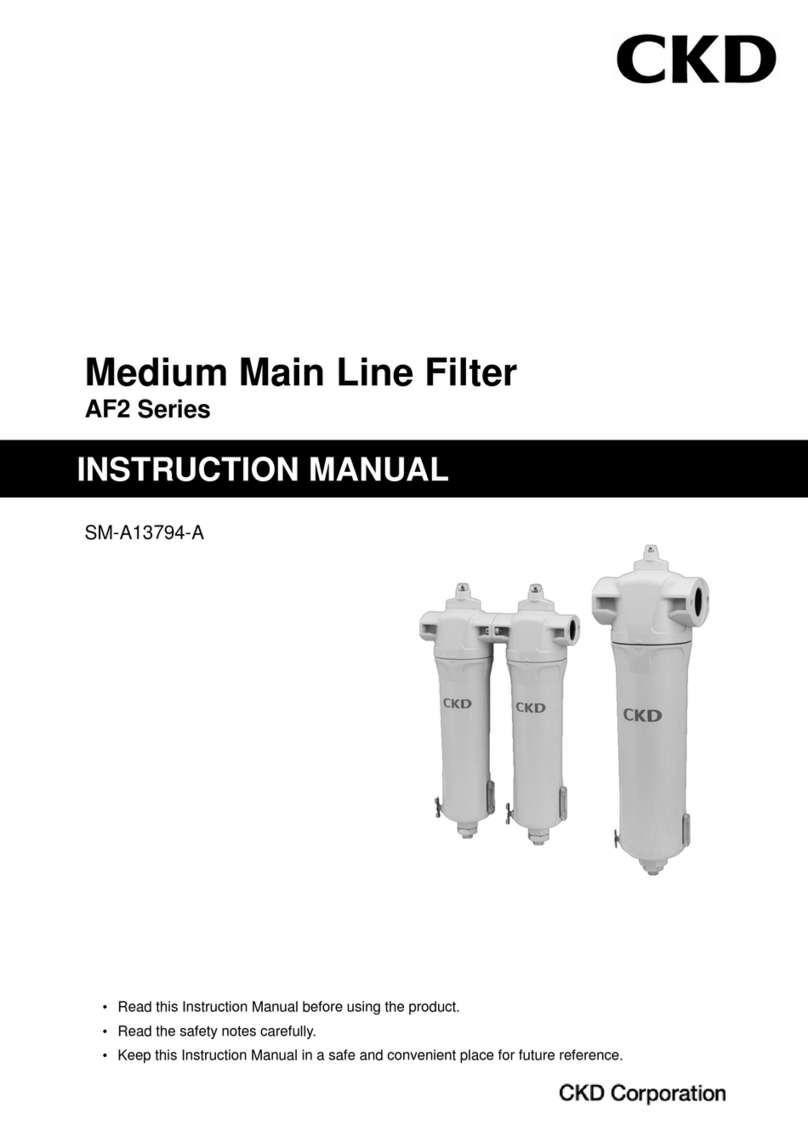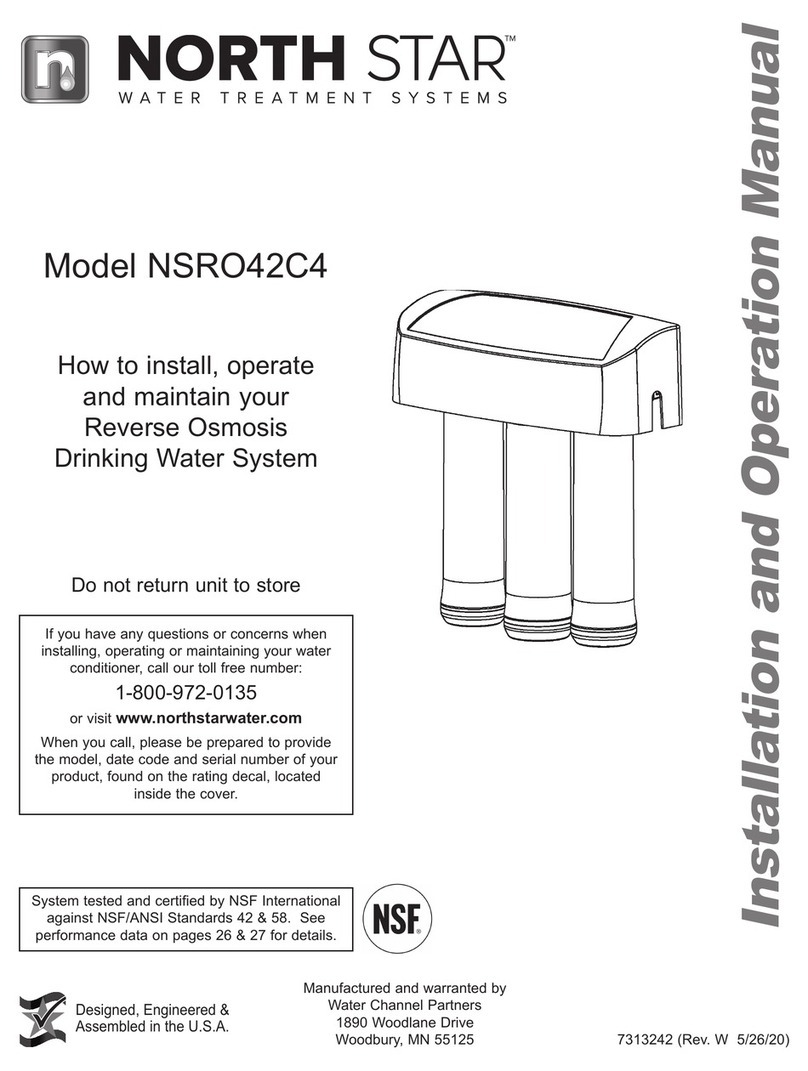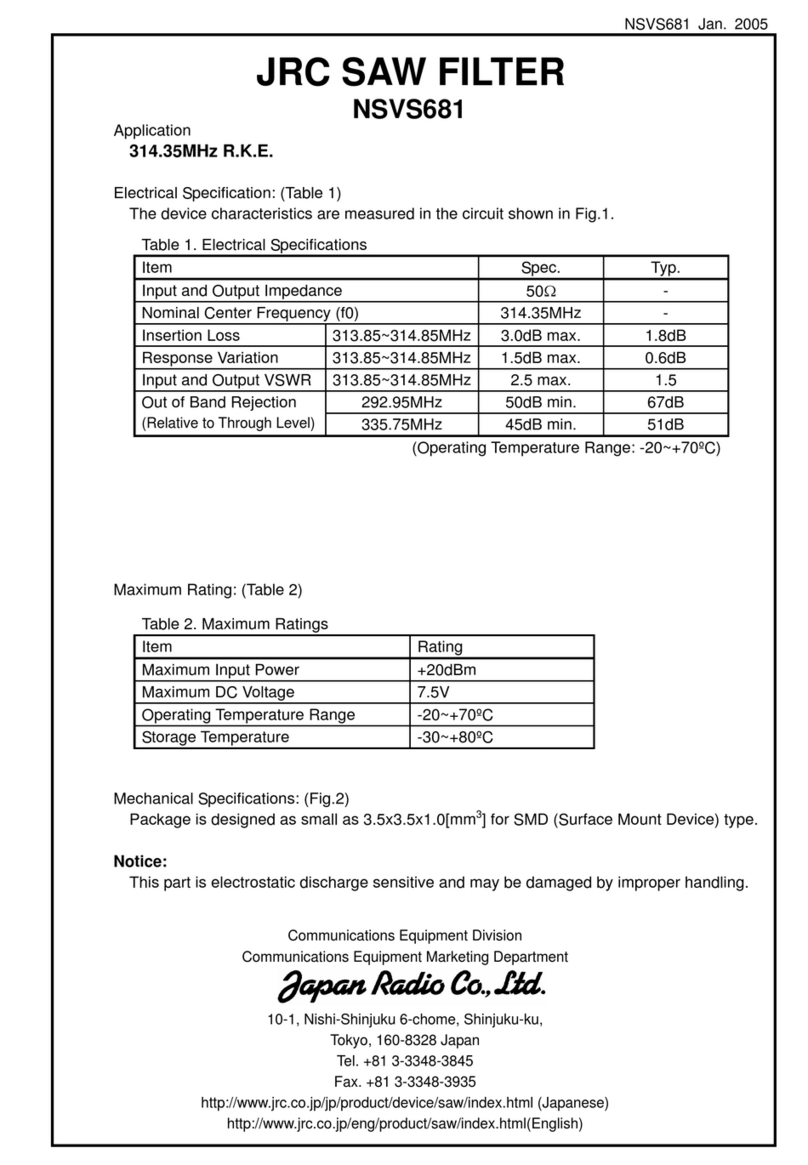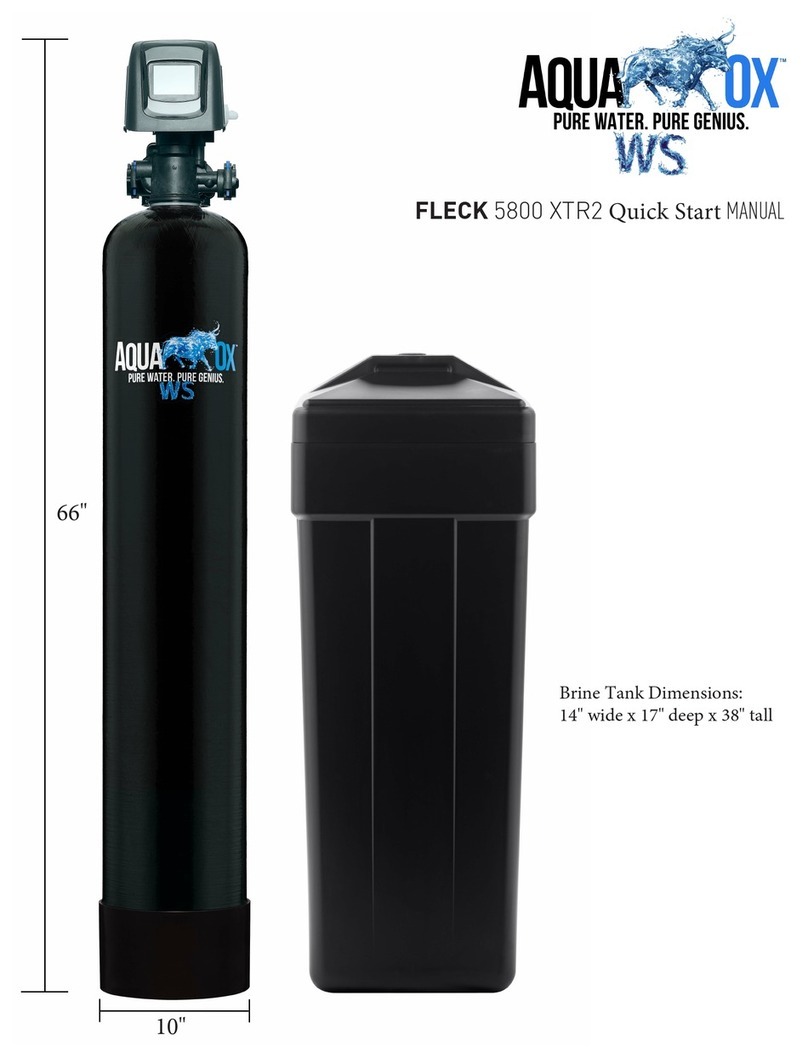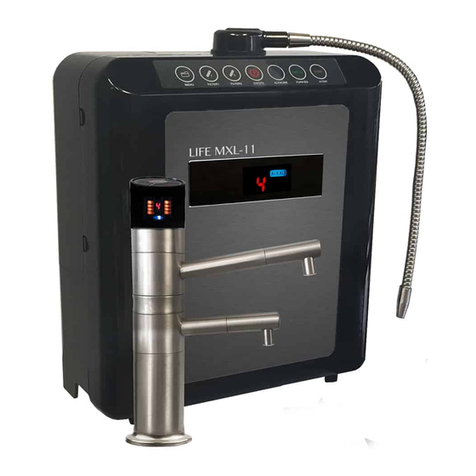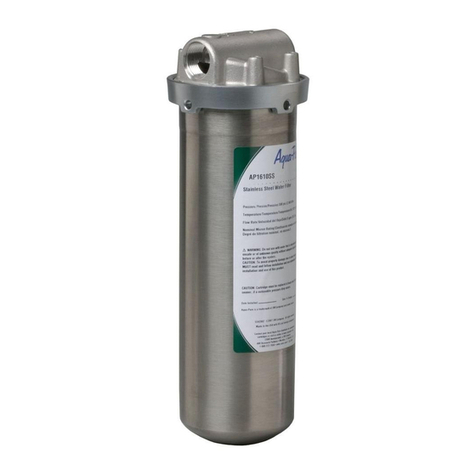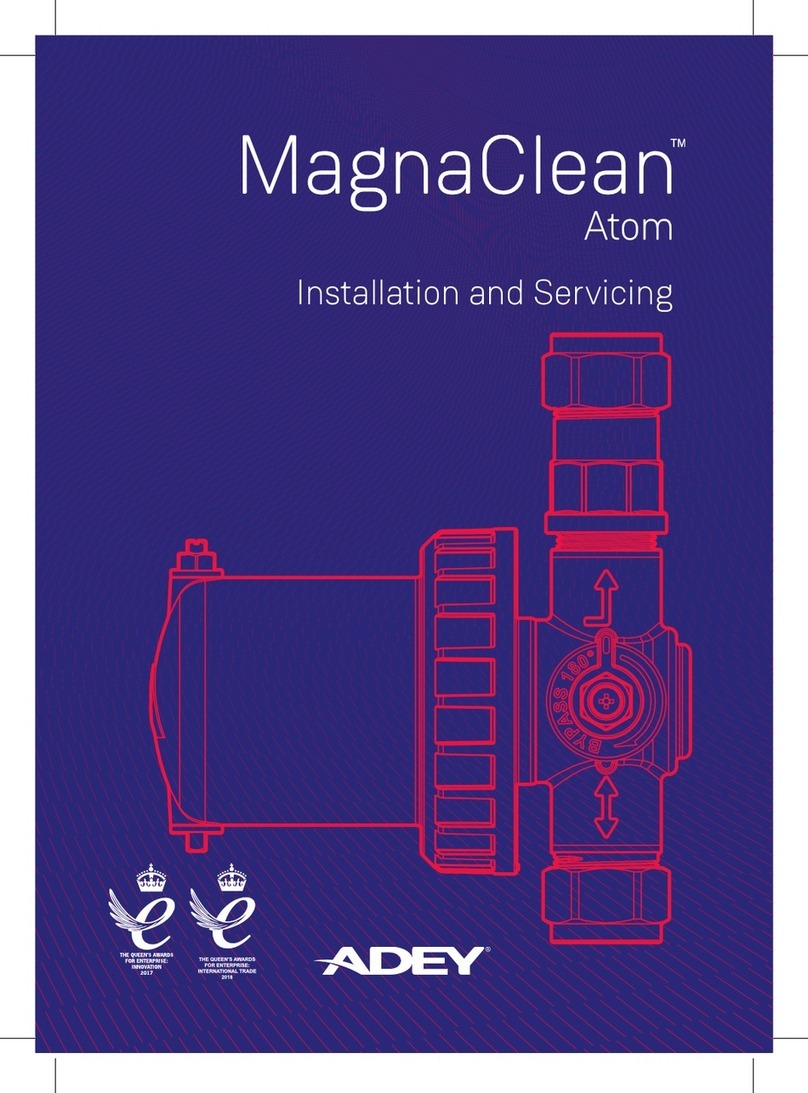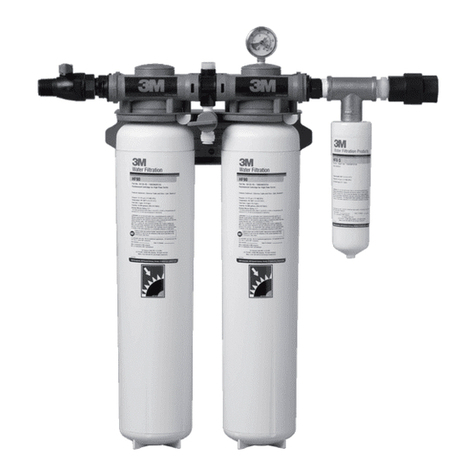Romac Industries Inc. Transmate deChlorinator User manual

1
Manual
Thank you for your purchase of the Transmate DeChlorinator. Please read and understand
this short operation manual. Our goal is to serve you, our customer. If you have any questions
or improvement suggestions please call us at 1-800-426-9341.
Romac Industries, Inc.
21919 20th Avenue SE • Suite 100 • Bothell, WA 98021
800 426 9341 • 425 951 6200 • Fax 425 951 6201 • www.romacindustries.com
deChlorinator Operations Manual
08/30/2018 Rev.
TM
Transmate
deChlorinator
TABLE OF CONTENTS
Solution Mixing ...........................................................................................................pg. 2
Components ...............................................................................................................pg. 3
Set-Up .......................................................................................................................pg. 4
Operation....................................................................................................................pg. 5
Toubleshooting ...........................................................................................................pg. 6

2
3
Solution Mixing
TM
Needle Valve Setting 150-200 GPM 200-300 GPM 300-400 GPM 400-600 GPM 600+ GPM
FULL OPEN 22 gph (14 min) 45 gph (7min) 64 gph (5 min) 90 gph (3 min) 110 gph (3 min)
3 turns 17 gph (18 min) 34 gph (9 min) 48 gph (6 min) 68 gph (4 min) 83 gph (4 min)
2 turns 6 gph (55 min) 12 gph (27 min) 16 gph (19 min) 23 gph (13 min) 28 gph (11 min)
1 turn 4 gph (1.5 hour) 7 gph (44 min) 10 gph (31 min) 14 gph (22 min) 17 gph (18 min)
FEED SOLUTION CONSUMPTION CHART
Consumption in gallons per (how many minutes to empty a 5 gallon bucket) hour
FLOW RATE in gallons per minute (GPM)
Vita-D-Chlor FEED SOLUTION MIXING AND
FEED SOLUTION VALVE SETTING CHARTS
This chart is good for water ow between 175 - 900 gpm
0 - .5 1/4 cup 2
.5 - 1 1/2 cup 2
1 - 1.5 1/2 cup 3
1.5 - 10 5 cups 2
10 - 30 15 cups 2
30 - 50 15 cups 3
50 - 150 25 cups Full open
150 - 200 34 cups Full open
If... Then add... Set Control Valve on...
Cl.(ppm, mg/l) Vita-D-Chlor cups for maximum Cl.
value per 5 gal water
NOTE: Mixed solution cannot be stored overnight. It will decrease in potency and will not dechlorinate.
If you
Turn control valve
toward 0
Turn control valve
toward full open
Increase the V-D-C mix
amount
Decrease the V-D-C mix
amount
You will
Decrease the ow of feed
solution
Increase the ow of feed
solution
Be able to decrease the
feed solution ow
Have to increase the feed
solution ow
And
Increase the amount of time
between solution batch mixing.
Decrease the amount of time
between solution batch mixing.
Increase the amount of time
between solution batch mixing.
Decrease the amount of time
between solution batch mixing.
Keep in mind
You might not be adding enough feed
solution to dechlorinate the water.
You might be using too much V-D-C mix
and overdosing the discharge water.
More V-D-C will be used and less time
spent making solution batches.
Less V-D-C used. More time spent
making solution batches.
Transmate
deChlorinator

2
3
Components
HYDRANT ADAPTER - Threads
onto the outlet of a re hydrant to
connect to the deChlorinator.
FEED SOLUTION CONTROL
VALVE - This valve enables you
to control the ow of the feed
solution.
MAKE-UP WATER PORT
- Solution make-up and
untreated sampling water
can ow out from here. FEED SOLUTION PORT - The
dechlorinating solution is fed
into this port. Flow range from
0 - 120gph.
Chlorinated
Water In
TM
FEMALE CAM LOCK
FITTING - Used to
connect deChlorinator
to hydrant adapter.
TM
Needle Valve Setting 150-200 GPM 200-300 GPM 300-400 GPM 400-600 GPM 600+ GPM
FULL OPEN 22 gph (14 min) 45 gph (7min) 64 gph (5 min) 90 gph (3 min) 110 gph (3 min)
3 turns 17 gph (18 min) 34 gph (9 min) 48 gph (6 min) 68 gph (4 min) 83 gph (4 min)
2 turns 6 gph (55 min) 12 gph (27 min) 16 gph (19 min) 23 gph (13 min) 28 gph (11 min)
1 turn 4 gph (1.5 hour) 7 gph (44 min) 10 gph (31 min) 14 gph (22 min) 17 gph (18 min)
0 - .5 1/4 cup 2
.5 - 1 1/2 cup 2
1 - 1.5 1/2 cup 3
1.5 - 10 5 cups 2
10 - 30 15 cups 2
30 - 50 15 cups 3
50 - 150 25 cups Full open
150 - 200 34 cups Full open
VACUUM GAUGE - Displays
amount of vacuum created by
water ow.
MALE CAM LOCK FITTING
-Quick tting for connecting
diffuser or exhaust hose.
GAS INJECTION
PORT - This port is
used to introduce
gas into the flow
stream.
Dechlorinated Water
Out
HANDLE
Transmate
deChlorinator

4
5
Set-Up
TM
NOTE: When using deChlorinator at very
high ows, be sure to place pin in hole
(shown below) to prevent the camlock from
blowing off.
1
2
1
2
2 1
2
3
3
Transmate
deChlorinator
Connect the hydrant adapter, control valve,
or extension hose directly to the hydrant.
Thread the hydrant adapter onto the end of
the control valve or extension hose if used.
This step is done regardless of which set-up
is used.
1
CONFIGURATION #1
Extension hose connected to the hydrant with the
deChlorinator on the ground and a diffuser connected
to outlet.
Connect female end of extension hose to hydrant or
hydrant adapter. In this case the hydrant adapter is
connected to the end of the extension hose.
Connect female end of deChlorinator to male end of
extension hose.
Connect diffuser to male end of deChlorinator.
CONFIGURATION #2
deChlorinator connected to a hydrant, and a diffuser
connected to the deChlorinator outlet.
Connect female end of deChlorinator to male
end of hydrant adapter.
Connect diffuser to male end of deChlorinator.

4
5
Set-Up
CONFIGURATION #3
This conguration is used when you wish to use the deChlorinator unit between hoses leading to
the hydrant adapter and diffuser.
NOTE: Keep in mind the extension hose needs to be extended straight out with no kinks or bends.
Connect female end of the extension hose to hydrant adapter.
Connect female end of deChlorinator to male end of extension hose.
Connect female end of exhaust hose to male end of deChlorinator.
Connect female end of diffuser to male end of exhaust hose.
NOTE: NO Kinks
NO Bends
3” ID minimum
20 ft. long maximum
CONFIGURATION #4
If you want to connect the deChlorinator to a re hydrant, using 20 feet of 3” ID exhaust hose
connected to the deChlorinator outlet. Follow these steps.
NOTE: It is NOT recommended that the deChlorinator be connected directly to a hydrant with
an exhaust hose connected to the outlet for use under 300 gpm.
Connect deChlorinator to male end of hydrant adapter.
Connect exhaust extension hose to male end of deChlorinator.
This hose needs to be 3” ID, and no longer than 20 ft.
Connect diffuser to male end of exhaust hose.
TM
1
2
1
3
2
3
4
4
1
2
3
1
2
3
TM
NOTE: NO Kinks
NO Bends
3” ID minimum
20 ft. long maximum
Transmate
deChlorinator

6
7
Operation
Once you have completedyour set-up, the last steps are simple. This section of the
manual deals with your deChlorinator’s gauges, valves and hoses. It will outline
and explain the ow direction, vacuum gauge and feed solution valve.
The ow direction for dechlorinating is clearly marked on the top of your deChlorinator.
Counter clockwise rotation opens valve.
Note color coding under valve handle:
Color under valve handle denotes how
open the valve is.
RED = one turn
BLUE = two turns
ORANGE = three turns
GREEN = full open
To install tubes on the Make Up Water Port and the Feed Soution Ports, just push tube in.
Removal is just as easy. To remove tubes, push in on outside collar while pulling away from unit on tube. Be sure not
to force or overpull on the ttings.
Feed solution ow begins as needle starts
moving
Vacuum = Suction
Suction = Suction Flow
• Connect the sampling tube to MAKE-UP WATER PORT
• Connect the feed solution tube to the FEED SOLUTION PORT.
• Connect the opposite end of the feed solution hose into the solution control
valve located at the bottom of the bucket.
TM
Transmate
deChlorinator

6
7
Operation
Now that you have the feed tubes connected properly you’re ready to start the ow of
water.
Begin the ow of water
The feed solution ow can
be ne-tuned with the control
valve. This allows just enough
dechlorinating solution to be fed
to the water ow and extends
the time between making up
more batches of feed solution.
NOTE: Frequently check chlorine
content of the discharge water and
adjust the feed solution as needed.
Control valve will ne-tune
the ow of the feed solution
TM
TM
Transmate
deChlorinator

8
Troubleshooting
Problem
deChlorinator not producing
enough suction
Make-up/Sampling water not
producing enough water ow
Outlet water not dechlorinated.
Youʼre at zero residual Cl, but
your suspect youʼre using too
much dechlorinating agent
Possible Solutions
• Open up feed solution valve. Rotate valve in counterclockwise
direction to open.
• Increase water ow rate.
• Check for blockage.
• Elevate bucket above deChlorinator. This will create a siphon.
• You might have too much exhaust hose length, too small an ID on
your exhaust hose, or too much restriction on your diffuser.
Shorten the exhaust hose length, and increase the exhaust hose ID.
• Increase the amount of water ow, by opening hydrant more
• Increase the amount of dechlorinating reagent by scooping more into
the feed solution mix.
• Slowly rotate the needle valve in the clockwise direction until you see
just a trace of Cl., then rotate back half a turn. Check to make sure
your residual is at zero.
TM
Transmate
deChlorinator
Table of contents
Popular Water Filtration System manuals by other brands

aquanique
aquanique QFP900 instruction sheet
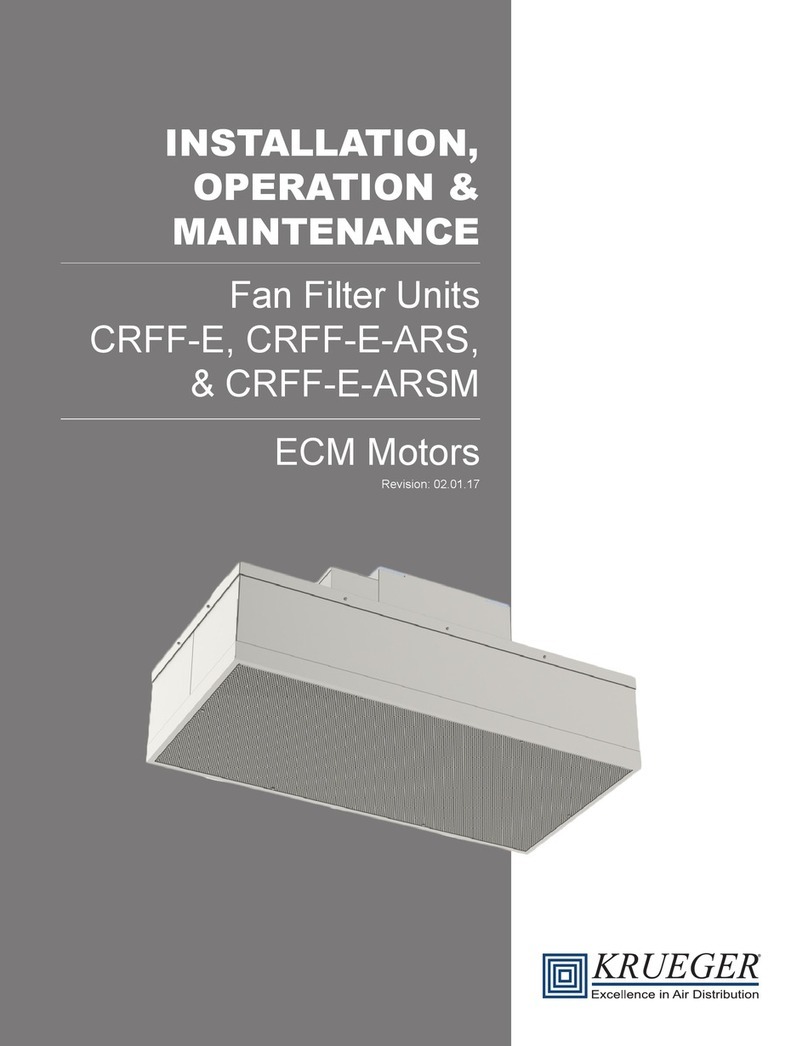
KRUEGER
KRUEGER CRFF-E Installation operation & maintenance
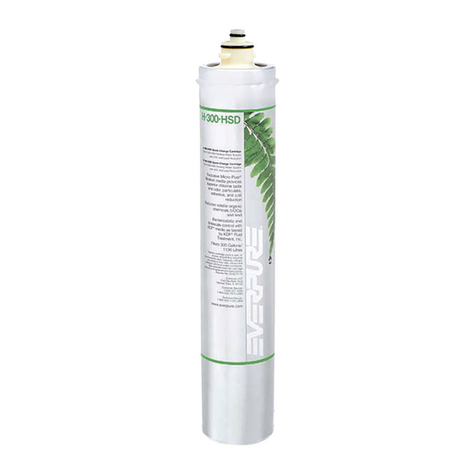
Everpure
Everpure H-54 Installation and operation guide
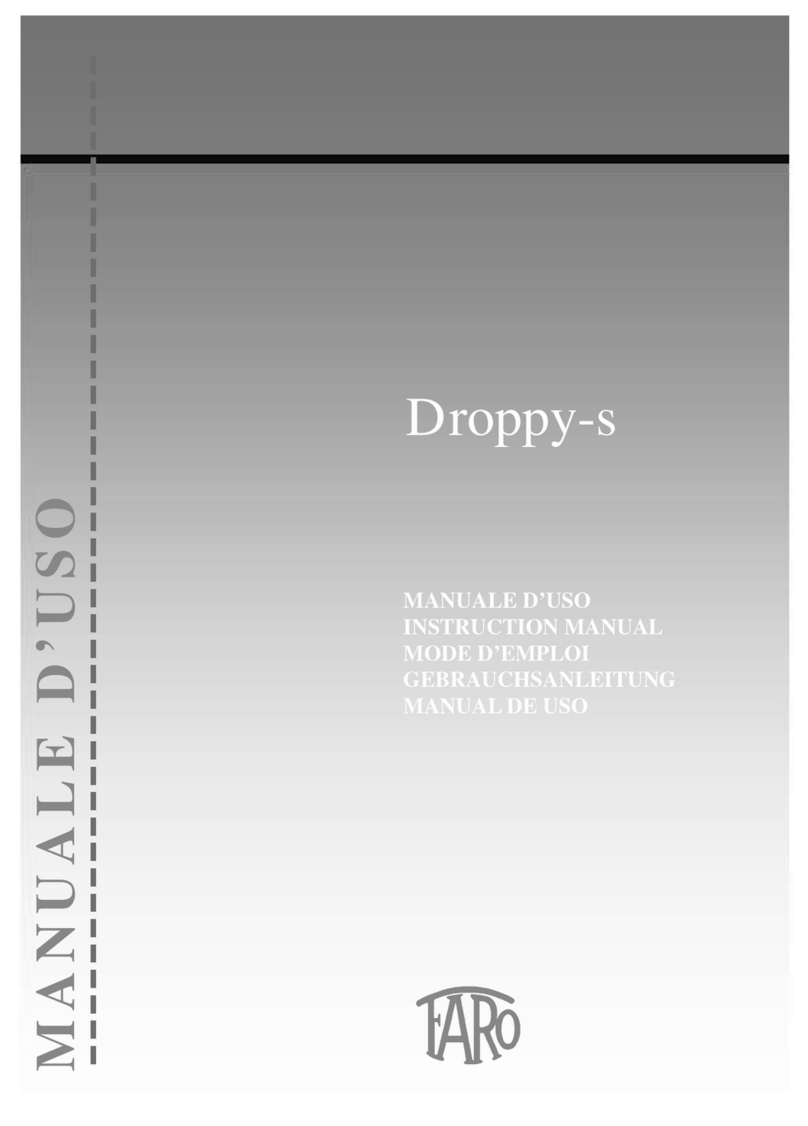
Faro
Faro Droppy-s instruction manual
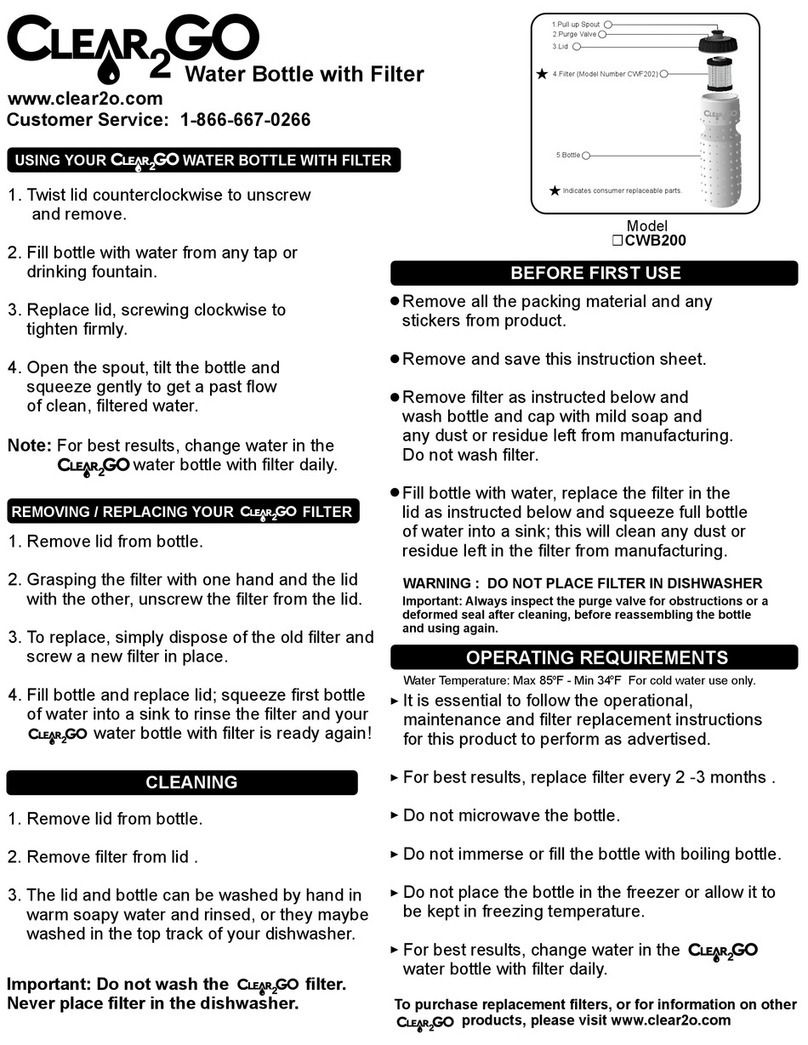
Applica Water Products
Applica Water Products Clear2GO CWB200 quick start guide
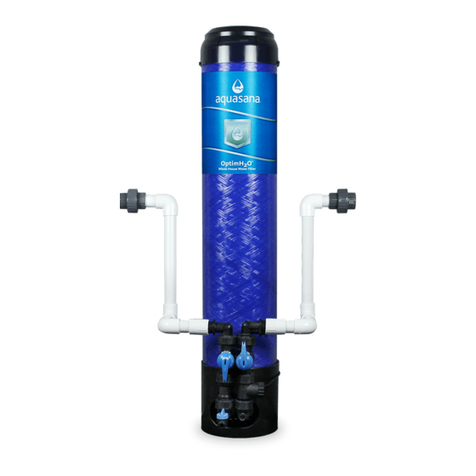
Aquasana
Aquasana OptimH2O EQ-OPTM installation instructions
